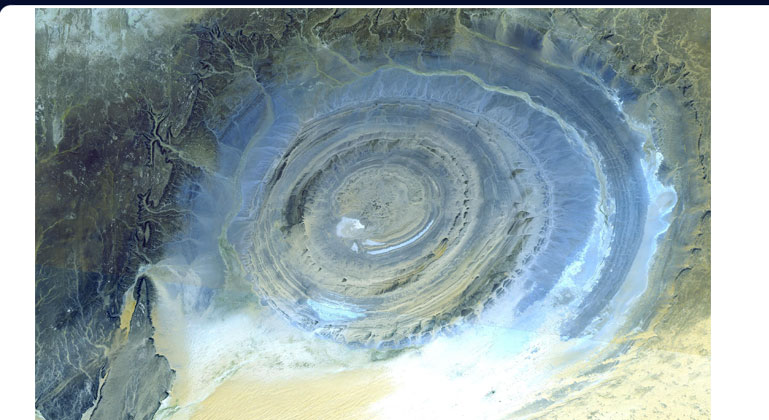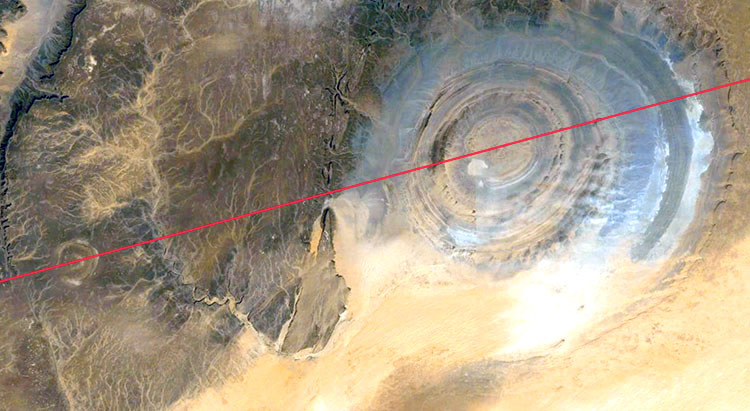




Resonant Standing Waves Form the Richat Structures
Mandala Bedrock Formations in Mauritania's Sahara Desert
by Alex Putney for Human-Resonance.org
May 19, 2013
Many formerly-mysterious processes of our resonant Earth are now revealing themselves. Natural gravitic forces of ultra-low frequency resonance below the threshold of human hearing are uplifting rock formations all over the world, even levitating huge boulders into the air. Geologists are quite confused as to the origin of bedrock structures that were at first assumed to have been produced by meteor impact:
Astronomy Picture of the Day -- 2013 May 19
What on Earth is that? The Richat Structure in the Sahara Desert of Mauritania is easily visible from space because it is nearly 50 kilometers across. Once thought to be an impact crater, the Richat Structure's flat middle and lack of shock-altered rock indicates otherwise. The possibility that the Richat Structure was formed by a volcanic eruption also seems improbable because of the lack of a dome of igneous or volcanic rock. Rather, the layered sedimentary rock of the Richat structure is now thought by many to have been caused by uplifted rock sculpted by erosion... Why the Richat Structure is nearly circular remains a mystery.
Like so many other previously-unexplained phenomena involving vortex locations on the planet, this enigmatic landscape in Mauritania, stripped bare by perpetual sandblasting of the hot Sahara winds, is the result of rock uplift related to infrasound standing waves, first discovered in 1899 by Nikola Tesla at his Colorado Springs research laboratory.
The Richat Structure, Mauritania (above, 21.12°8N 11.400°W) is 2,708 miles from the Great Pyramid of Giza, Egypt, comprising a resonant distance that is 10.9% of the Earth's mean circumference of 24,892 miles.

The famous giant concentric sedimentary formation actually has a disregarded twin structure situated to the west of the main structure. This smaller concentric companion feature (above, 21.015°N 11.834°W) is located 2,737 miles from the Great Pyramid, at exactly 11.0%. The two concentric bedrock features are aligned directly with the Great Pyramid, with all three sites falling along a single axis.
These magnificent structures may exist in many other parts of the world, hidden below topsoil and vegetation. While the hot, dry Sahara winds are a menace to all life, the exposed bedrock of sites such as these reveal the fundamental principles underlying planetary infrasound resonance.